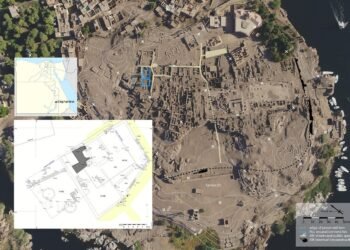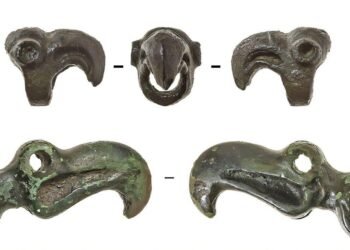The splendor of the seven descending gods of Tulum has been restored to its former glory, marking a significant milestone in the preservation efforts of Mexico’s rich archaeological heritage. In December 2023, the restoration stage of these revered figures and accompanying murals concluded, representing a crucial component of the Project for the Conservation of Movable Property Associated with Buildings within the Tulum Archaeological Zone, located in Quintana Roo.

Undertaken as part of the broader Archaeological Zones Improvement Program (Promeza), which aligns with the ongoing construction of the Mayan Train, this restoration initiative was spearheaded by the federal Secretariat of Culture in collaboration with the National Institute of Anthropology and History (INAH).
Led by project manager Patricia Meehan Hermanson, the restoration effort encompassed meticulous tasks including cleaning, fragment adhesion, gap filling, sealing, and edge tying to prevent further deterioration. Crucially, color reintegration was applied to missing sections, ensuring the protection and revitalization of the intricate mural paintings and stucco reliefs adorning the site’s most iconic structures.
One of the central figures of this restoration project is the descending god, a distinctive emblem of the Eastern Costa Maya region in Quintana Roo. Jesús Antonio Muñoz Cinta, a restorer involved in the endeavor, described the characteristic pose of the descending god, evoking a falling human form with legs flexed upward, torso partially exposed, arms semi-arched downward, and head facing the viewer.
The prominence of the descending god extends beyond Tulum, with similar depictions found throughout Mesoamerica. However, it is along the Eastern Coast, particularly in sites like Tulum, Cobá, and Tancah, where these figures take center stage, adorning buildings and artifacts dating back to the Postclassic period (900-1542 CE).
The completion of the restoration phase saw the preservation of all seven descending gods discovered in Tulum. Notable examples include those found in Building 16 (Temple of the Frescos), Building 25 (House of Halach Huinik), and the Temple of the Descending God, renowned for lending its name to Building 5. Additionally, Building 1 (The Castle) features two figures, each integral to the complex scenes depicted in mural paintings adorning its structures.
In addition to the restoration work, these endeavors illuminate the depths of Tulum’s past, providing valuable glimpses into the cosmological beliefs and religious customs of the ancient Maya civilization.





















